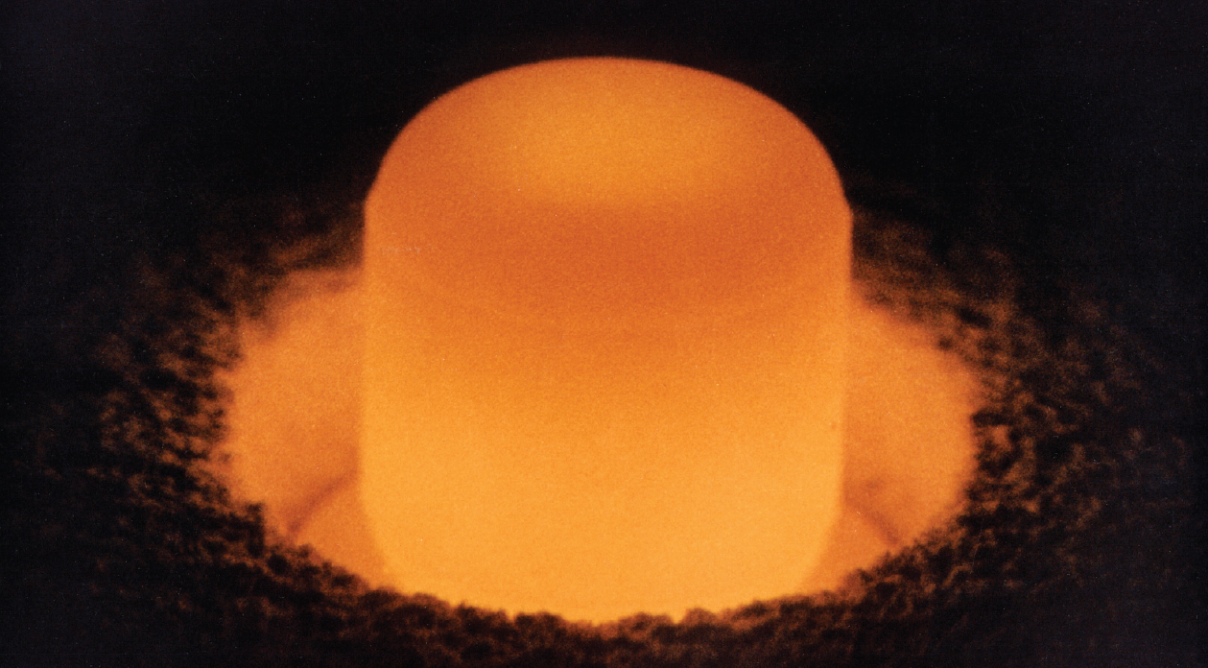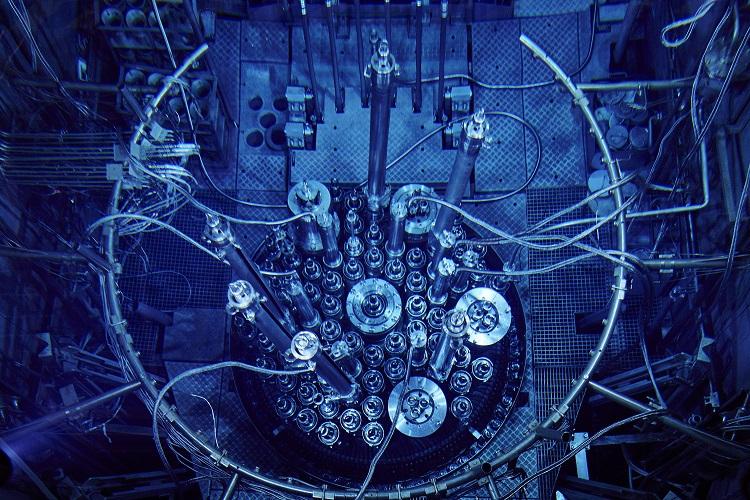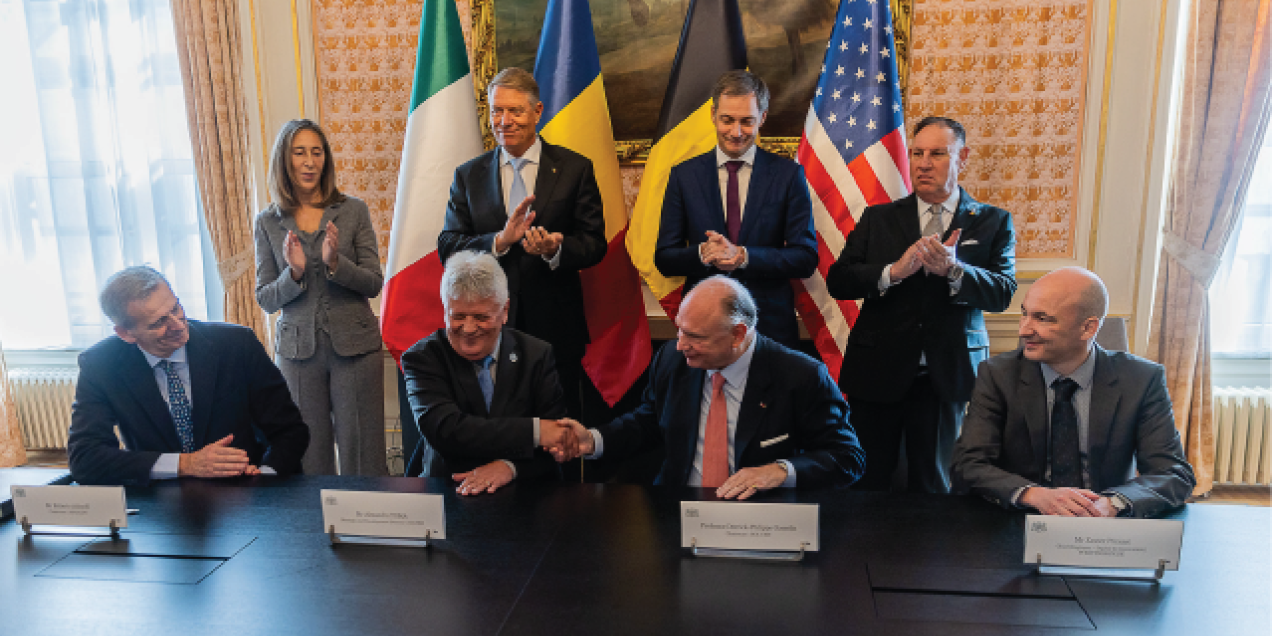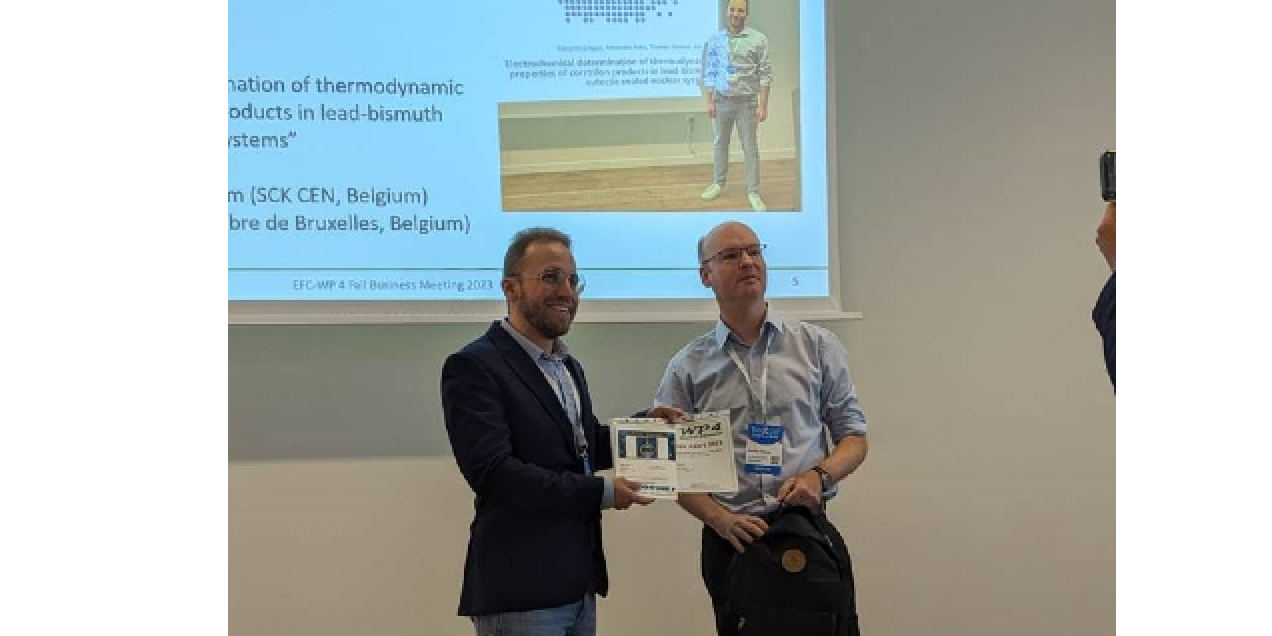Off to new avenues for power generation in space
Launch of the PULSAR project
ESA, the European Space Agency, is showing interest in developing Radionuclide Thermo-electric Generators (RTGs): cost-effective primary power sources for missions beyond low-Earth orbits. Among other things, they want to use these energy sources in the European Large Logistics Lander mission (EL3). To achieve this, together with our partners we launched the PULSAR project. (Acronym: PU-238-coupLed dynamic power system for SpAce exploRation and beyond).


RTGs: Radionuclide Thermo-electric Generators
It is sometimes overlooked, but having a power supply is the heart of any space mission. For missions in low orbit, communication satellites, etc., solar panels are used, in combination with rechargeable batteries. To explore the outer reaches of our planetary system, such as the orbit around Jupiter and beyond, solar panels are not a viable option. For this, so-called Radionuclide Thermo-electric Generators (RTGs) are used. These use the decay heat of a radioactive nuclide (primarily plutonium-238) as the primary source to generate electricity.
Plutonium-238 as the preferred isotope
The isotope Plutonium-238 (Pu-238) is the preferred choice for these RTGs. Indeed, it offers a lot of advantages. It is an almost pure alpha emitter, has a high power density and a half-life of 87.7 years. As a result, it provides a stable source of power for decades. PU-238 is obtained by irradiating Neptunium-237 (Np-237) with a high neutron flux. Neptunium-237 is a radioactive nuclide present in spent fuel from our nuclear reactors. Daughter products of Np-237 contribute to the high radiotoxicity of spent fuel for many millennia. Converting this 'waste' into a valuable raw material is a noble endeavour, but it is not straightforward.
Overcome obstacles
PULSAR seeks to overcome obstacles to the development of Radioisotope Power Systems (RPS), a key enabling technology for exploration of deep space, where the sun cannot deliver sufficient power to spacecrafts. RPS are the only existing alternative to photovoltaic cells for long-term power generation in space, but they remain a niche technology to this day and Europe does not currently have its own RPS design nor produce Plutonium-238 (Pu-238), the preferred isotope for fuelling space missions.
To address technological shortcomings and external dependencies, PULSAR will lay the foundations for end-to-end production of Pu-238 in Europe and use a Stirling engine to design a European dynamic RPS that will be up to five times more efficient than the current systems. Both outputs are expected to reach a technology readiness level (TRL) of 4 by the end of the project.

SCK CEN, an indispensable link
SCK CEN, TRACTEBEL and Orano recently conducted a feasibility study, with the support of ESA. The PULSAR project can now take advantage of this. During this study, all the resources and assets (within Europe) were evaluated which are necessary to produce Pu-238 by irradiating Np-237.
From this evaluation, SCK CEN, with its unique infrastructure, emerged as an indispensable link. Our BR2 is ideal for a demonstration production of Pu-238. Our actinide laboratories and partitioning laboratories are also well equipped to conduct the necessary front-end research (target production) and back-end research (separation and purification of Plutonium (Pu) and Neptunium (Np)).
The PULSAR consortium
The PULSAR consortium — led by TRACTEBEL, a Brussels-based international nuclear engineering consultancy that is part of the ENGIE group — brings together key European actors of the nuclear and space sectors (Belgian Nuclear Research Centre - SCK CEN, French Alternative Energies and Atomic Energy Commission - Commissariat a l'Energie Atomique et aux Energies Alternatives, European Commission Joint Research Centre, Airbus Defence and Space, ArianeGroup); a world leader in Stirling engines research (UBFC - Université Bourgogne-Franche-Comté and its affiliated entity, Université de Franche-Comté); and two consultancies with expertise in innovation and technology transfer (INCOTEC - Innovación Eficiente) and collaborative research management (ARTTIC ). The research will be carried out between September 2022 and August 2024.
Related articles
 22 March '24
22 March '24 08 November '23
08 November '23 01 September '23
01 September '23